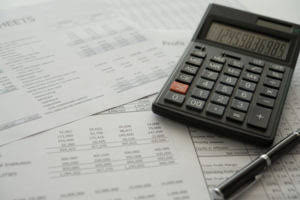
The steps to determine the annual depreciation expense under the double declining method are as follows. To get a better grasp of double declining balance, spend a little time experimenting with this double declining balance calculator. It’s a good way to see the formula in action—and understand what kind of impact double declining depreciation might have on your finances. But as time goes by, the fixed asset may experience problems due to wear and tear, which would result in repairs and maintenance costs. That’s why depreciation expense is lower in the later years because of the fixed asset’s decreased efficiency and high maintenance cost.

Calculating the Depreciation Formula for DDB

However, the 20% is multiplied times the fixture’s book value at the beginning of the year instead of the fixture’s original cost. In the world of finance and accounting, understanding how to manage and account for asset depreciation is crucial for all businesses. Imagine being able to maximize your tax deductions and improve your cash flow in the initial years of an asset’s life. The double declining balance method (DDB) describes an approach to accounting for the depreciation of fixed assets where the depreciation expense is greater in the initial years of the asset’s assumed double declining balance method useful life.
What is your current financial priority?

Note that the estimated salvage value of $8,000 was not considered in calculating each year’s depreciation expense. In our example, the depreciation expense will continue until the amount in Accumulated Depreciation reaches a credit balance of $92,000 (cost of $100,000 minus $8,000 of salvage value). The “double” or “200%” means two times straight-line rate of depreciation.
What is the double declining balance method of depreciation?

For the second year of depreciation, you’ll be plugging a book value of $18,000 into the formula, rather than one of $30,000. Next year when you do your calculations, the book value of law firm chart of accounts the ice cream truck will be $18,000. Don’t worry—these formulas are a lot easier to understand with a step-by-step example.

- Double Declining Balance (DDB) depreciation is a method of accelerated depreciation that allows for greater depreciation expenses in the initial years of an asset’s life.
- Insights on business strategy and culture, right to your inbox.Part of the business.com network.
- The double declining balance (DDB) depreciation method is an accounting approach that involves depreciating certain assets at twice the rate outlined under straight-line depreciation.
- For instance, if an asset’s estimated useful life is 10 years, the straight-line rate of depreciation is 10% (100% divided by 10 years) per year.
- The double-declining method involves depreciating an asset more heavily in the early years of its useful life.
- Since depreciation is not intended to report a depreciable asset’s market value, it is possible that the asset’s market value is significantly less than the asset’s book value or carrying amount.
Depreciation is an accounting process by which a company allocates an asset’s cost throughout its useful life. Firms depreciate assets on their financial statements and for tax purposes in order to better match an asset’s productivity in use to its costs of operation over unearned revenue time. One of the main financial statements (along with the income statement and balance sheet).
- If something unforeseen happens down the line—a slow year, a sudden increase in expenses—you may wish you’d stuck to good old straight line depreciation.
- When a depreciable asset is sold (as opposed to traded-in or exchanged for another asset), a gain or loss on the sale is likely.
- 150% declining balance depreciation is calculated in the same manner as is double-declining-balance depreciation, except that the rate is 150% of the straight-line rate.
- Our intuitive software automates the busywork with powerful tools and features designed to help you simplify your financial management and make informed business decisions.
- The underlying idea is that assets tend to lose their value more rapidly during their initial years of use, making it necessary to account for this reality in financial statements.
- This method results in a larger depreciation expense in the early years and gradually smaller expenses as the asset ages.
Yorum Yaz
Sign in to post your comment or sign-up if you don't have any account.